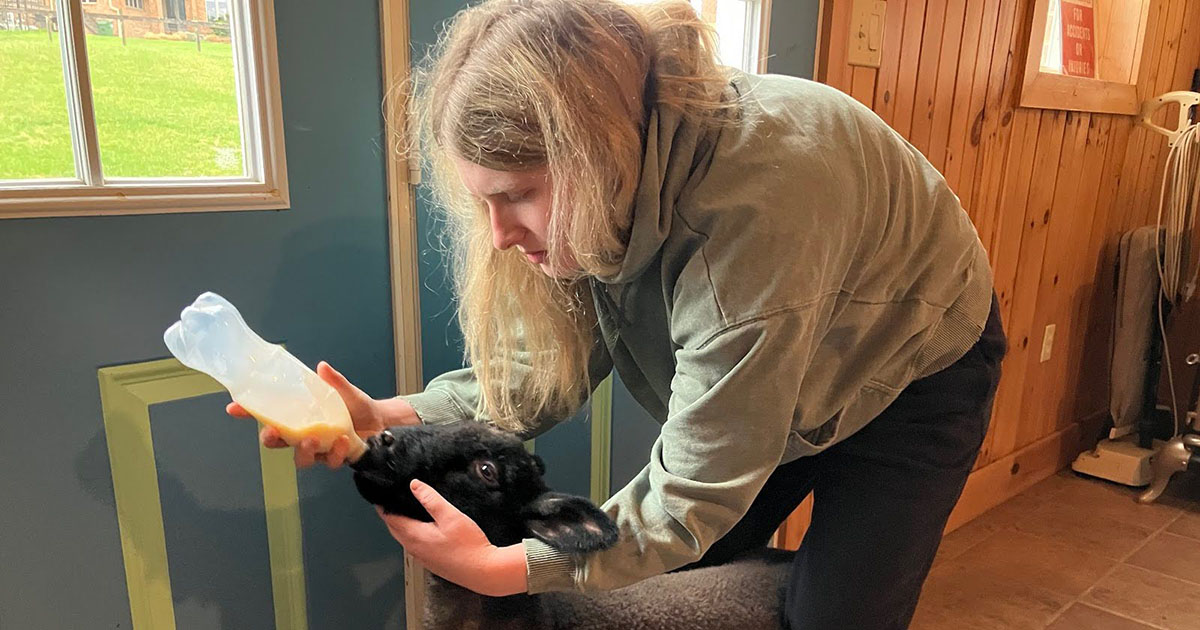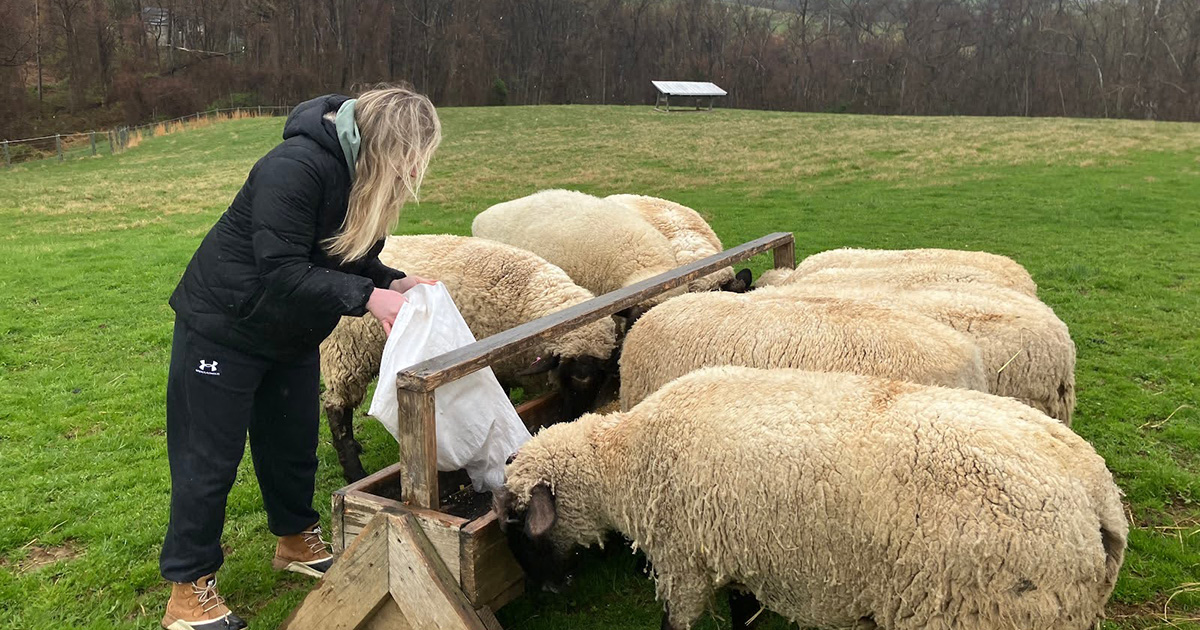
Category: Animal and Food Sciences

UD’s animal science graduate degree paves a path to veterinary school
May 12, 2025 Written by Molly Schafer | Courtesy of Lexi Roloson
When Lexi Roloson decided to become a veterinarian, she had a problem: it was her senior year of college, and she had zero veterinary work experience, a requirement for the competitive veterinary school applications.
“I decided late in my undergraduate degree that I wanted to become a veterinarian,” Roloson said. “It wasn't until I was deep into courses like anatomy and biology that I realized veterinary medicine was something I could do and do well.”
The University of Delaware’s Non-thesis M.S. in Animal Science provided Roloson with a solution. The degree allowed Roloson to gain the necessary experience and start assisting with veterinary care before receiving her diploma.
“UD’s degree is tailored to pursuing veterinary medicine with preparation in the classroom and opportunities outside of the classroom,” said Roloson, who was also impressed by UD’s high undergraduate acceptance rate of 89 percent for veterinary schools, which is more than twice the national average.
Enrolling in the College of Agriculture and Natural Resources program as a part-time student allowed Roloson to work as a veterinary assistant and collect hours of essential veterinary experience while taking classes. Roloson also volunteers at Restoration Farm in Street, Maryland, where she enjoys working with sheep and lambs.
“I was able to pursue an externship through UD and gain work experience at a local veterinary hospital,” Roloson said. “I have shadowed both equine veterinarians and large animal veterinarians.”
The animal science graduate coursework is designed for college graduates or working professionals. Students can enroll full—or part-time and complete the degree in one to two years.
“There's a lot of flexibility in that regard, which was very helpful and allowed me to get the work experience I needed,” Roloson said. “The professors are very accommodating. They understand we are pursuing different commitments outside of the classroom.”
Along with courses and externships, master’s students must complete an individual research experience. Rolson said her time in the lab with Yihang Li, assistant professor of animal nutrition and gastrointestinal physiology, raised her confidence. As a bonus, exposure to lab work has broadened her understanding while reading research papers.
Roloson especially enjoyed her time as a teaching assistant for an undergraduate Functional Anatomy course taught by Tara Gaab, assistant professor of animal science.
“Dr. Gaab is a working veterinarian, and she teaches at the University of Delaware,” Roloson said. “That's inspiring and something I would like to pursue later in my veterinary career.”
Roloson is pursuing the non-thesis master's degree with a concentration in Veterinary Biosciences, Biotechnology, and One Health (VBBOH); she focused her coursework on animal nutrition.
“If I decide to pursue large animal medicine, my Ruminant Nutrition course (ANFS 654) will be especially useful,” said Roloson, whose final paper was on giraffe nutrition.
Tanya Gressley, associate dean of graduate programs and a UD professor, taught the course. She said Roloson was an outstanding student.

“I particularly enjoyed learning from her final paper about the nutritional difficulties faced by captive giraffes,” said Gressley, who is also a dairy nutritionist. “And what animal scientists and veterinarians are doing to ensure their nutritional needs are met.”
Many students find the workload and pace of veterinary school overwhelming. Roloson said starting veterinary school with a good foundation, including topics covered in courses like Animal Virology (ANFS 635) and Bacterial Pathogens: Molecular Mechanisms (BISC 682), will help her succeed.
“If you want to be a food animal or large animal veterinarian, Food Microbiology (ANFS 639) is useful because you need to understand how microorganisms affect the animal and the people eating their meat,” added Roloson.
Perhaps the most immediately useful piece of information Roloson absorbed from her non-thesis master’s was what she relied on to save the life of a premature lamb. Roloson had been watching a pair of lambs closely when she noticed a marked decline in their health.
“I knew from my classes that because of the environment farm animals are in, they're exposed to a lot of pathogens,” Roloson said. “They are at higher risk for infection.”
When she observed one lamb limping, Roloson knew from her veterinary assistant internship that there was cause for concern. She convinced the farmer that the lambs needed immediate attention and drove them to a nearby veterinary clinic. It was after hours, and the veterinarian made good use of Roloson’s experience as a veterinary assistant.
“I helped with X-rays, drawing blood, and eventually tube feeding,” Roloson said.
The lamb’s limp was due to septic arthritis, and the other lamb was hypothermic. Only one lamb survived the illness.
“My favorite memory is seeing the lamb a week later, watching him jump around, and finally acting like a lamb.”
Roloson will graduate from UD with a master’s degree in animal science this spring. In the fall, she will attend the College of Veterinary Medicine at the University of Illinois, Urbana-Champaign.
”This is one of my biggest accomplishments and the happiest I’ve ever been,” Roloson said.
